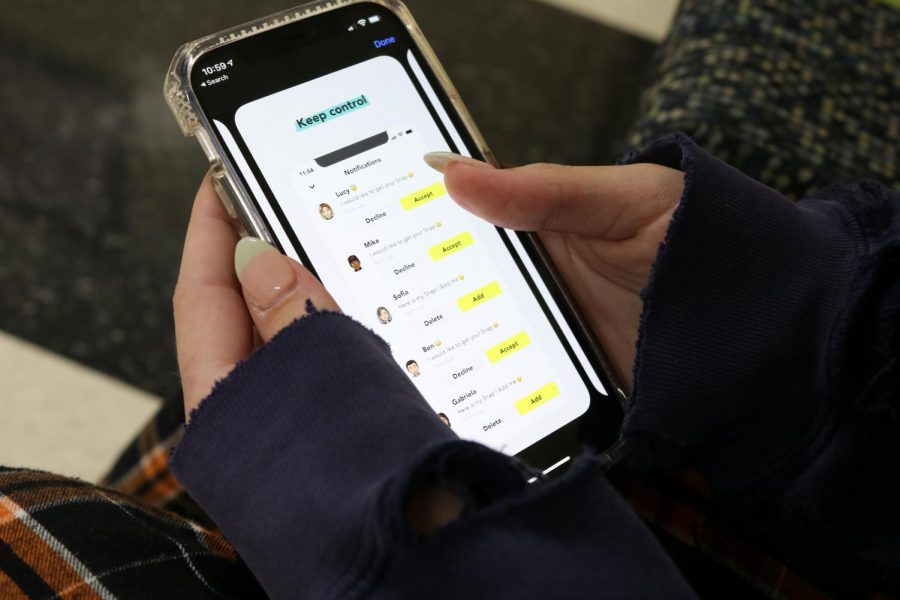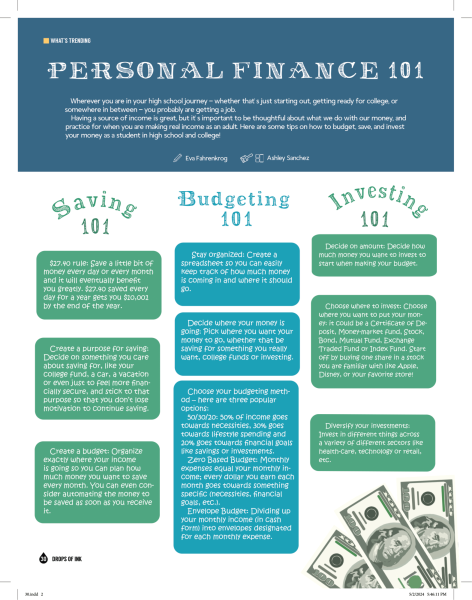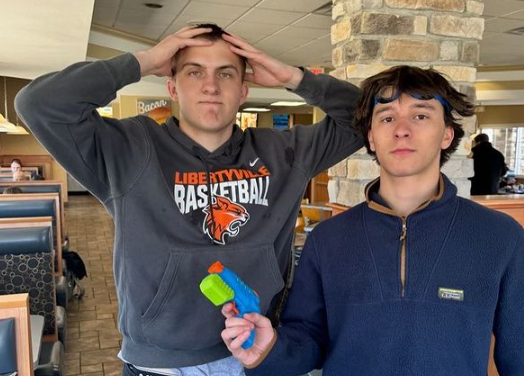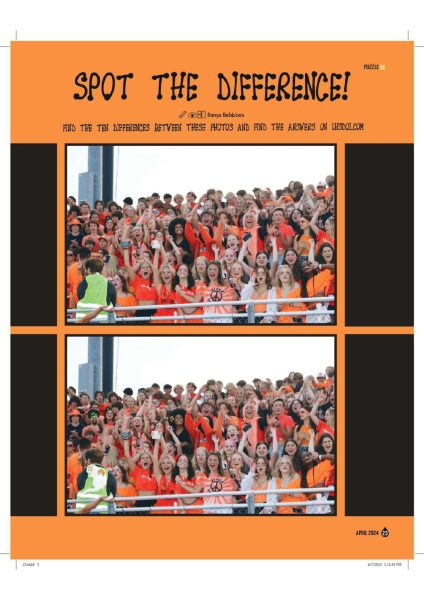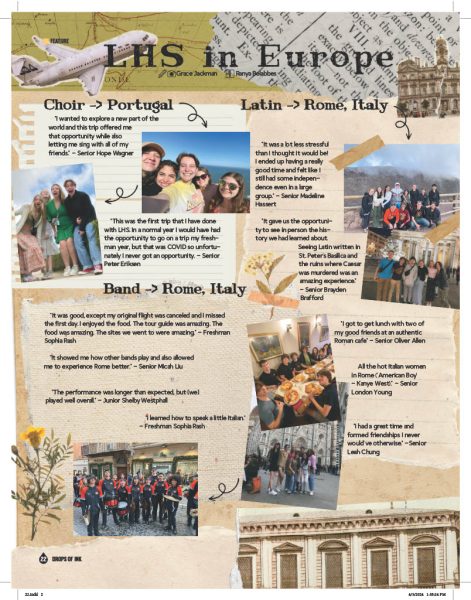Exposing Hoop: The Dangers of Tinder for Teens
The social networking app Hoop is a way for teens to explore their options of friends that they can connect with through Snapchat. In order to add friends they have to earn diamonds- which can be earned by watching advertisements and logging onto the app daily
Created in 2016 by the startup Dazz, the app Hoop has grown more and more popular, reaching a peak of number one among social networking apps for Apple in Jan. 2020 and amassing over three million installations. It now rests at number 40 on the iOS social networking chart.
Hoop has often been dubbed “Tinder for teens,” as it allows users to connect with others, and can be used as a means for people under 18 to hook up.
“I wanted to have more experience talking to guys,” said an anonymous LHS student who used Hoop in the past. “I feel that at school, there isn’t much connection that you have with someone else. If you’re talking with someone at school, it’s more mostly based on school . . . and you’re not able to expand further after that.”
Users create profiles with biographies and photos of themselves, and ‘swipe’ through other profiles, similar to dating apps like Tinder. If they see someone they like, they can click the Snapchat icon that requests their Snapchat information.
Unlike Tinder, however, users need to pay to ‘swipe right,’ or request Snapchat information, using the app’s currency, diamonds. Once users run out of diamonds, they are no longer able to interact with others.
This promotes users to get more diamonds through inviting friends to Hoop, logging onto the app daily or watching advertisements, thereby growing Hoop’s user base and rewarding more active users.
Questions have been raised about possible dangers the app could hold, since it allows teenagers the opportunity to meet with people they’ve only interacted with online in person.
“The risks, I think, seem reasonably high. My mind goes also to the potential… of you just not knowing who [you meet] . . . We always want to believe that people have good intentions. There’s just no way to know what people’s actual intentions are,” explained Dr. Brenda Nelson, LHS’s Prevention and Wellness Coordinator.
One way the app’s creators have tried to mitigate any danger associated with the app is by siphoning users into two groups — 12 to 18 and over 18. Users over 18 cannot see the profiles of those under 18.
However, users can change their age at any point, allowing any adult to lie about being under 18 and interacting with minors. The opposite could also happen, with minors saying they’re adults, which could further put them in danger.
“Hookup culture has always been a thing . . . as soon as you introduce potential anonymity or . . . adults masking themselves as teens — this is ever since the advent of the Internet — young people [can] get preyed on . . . There’s just so so so many horrible, lifelong consequences that come from that, that are entirely mental health-related,” said Dr. Nelson.
Even if the separation between adults and minors was infallible and adults were unable to interact with minors on the app, there are still evident issues with the setup. By making the app available to users as young as 12, it potentially exposes extremely young people to unsafe situations.
Hoop requires that users under 18 get a legal guardian’s permission to join the app, but that is easily faked by simply clicking a box saying that they have permission, even if they don’t
While the creators of Hoop state the app was not created for teens to hook up, it is still used that way, with little to no effort from the app’s creators to stop this from happening.
The app has updated multiple times; however, the only efforts made to improve the app’s safety were adding a phone number verification and revising activity verification tools, according to the app’s version history.
Hoop has also made users’ Snapchat information private, unless they agree to give it to another user, but this still doesn’t fix inherent issues.
“The gap [between emotional maturity and sexual behavior] concerns me,” said Dr. Nelson. “The first thing that comes to my mind is just the role of regret and social [concerns], like . . . if you hook up with somebody at school . . . [Teenagers] are already at a period where there’s just some greater vulnerability. Because of that alone, there’s going to be . . . mental health vulnerability, no matter what sort of risk behavior you’re looking at.”
The app doesn’t provide location services, so users cannot see the location of people they interact with. However, many choose to put that information in their bio.
Also, if two users exchange Snapchat information, they would be able to see each other’s locations on Snapchat if they had their locations enabled.
This presents even more safety concerns around the app, since teenagers would be given the opportunity to share their location with complete strangers.
Another way users can get diamonds is to add people they meet on Hoop on Snapchat, where more of their personal information, including their location, could be shared, putting teenagers in possibly unsafe situations.
Hoop itself isn’t designed as a platform for communication. It sets up Snapchat users to connect with each other, and then interact on Snapchat, not Hoop. Hoop doesn’t have a chat feature, and is wholly reliant on Snapchat as a means for interaction between users.
“The entire time I was on [Hoop] wasn’t all bad, but it was pretty much half of the time. I just think you’re just supposed to be careful of where you put yourself out . . . and different people that you put yourself out towards as well,” stated the anonymous student.
According to Dr. Nelson, Hoop’s safety concerns directly tie into possible mental health concerns.
She stated, “The relationship between our safety and mental health is really critical, so you . . . [can’t] separate out the two. . . Trauma always has a mental health impact of some sort. . . There’s the app, [which leads to] potential trauma. And mental health [concerns]. . . But [safety] is the elephant in the room.”
There are a variety of safety issues with the app that could contribute to possibly traumatic experiences, from the ease at which adults can interact with minors to the promotion of sharing personal information.
“I feel like I’ve been more careful of who I am [since I stopped using Hoop] and how I put myself out there, just to save myself from getting hurt . . . Some people aren’t understanding that everyone is maturing at a different level. So you just have to be aware,” explained the anonymous student.
Hoop creates the potential for users to prey on the vulnerability of teenagers. It markets itself as a means to connect with people, without addressing extremely prevalent physical and mental health concerns that go along with it.
“I would say look for a better app [to people looking into using Hoop],” the anonymous student said. “Try not to rush into trying to meet new people and building your expectations up because they’re going to fail. And you’re not going to be really happy with the outcome.”



